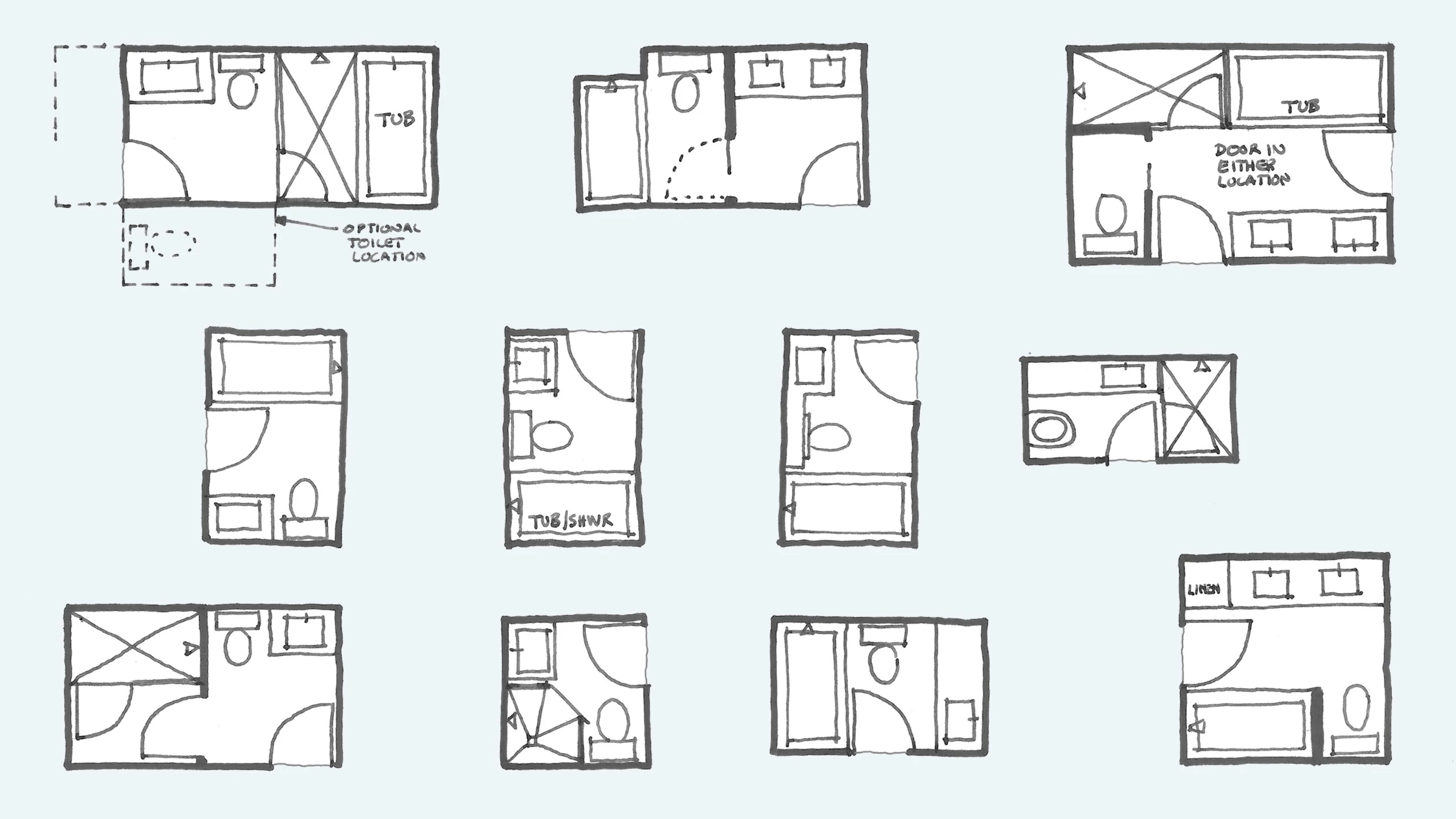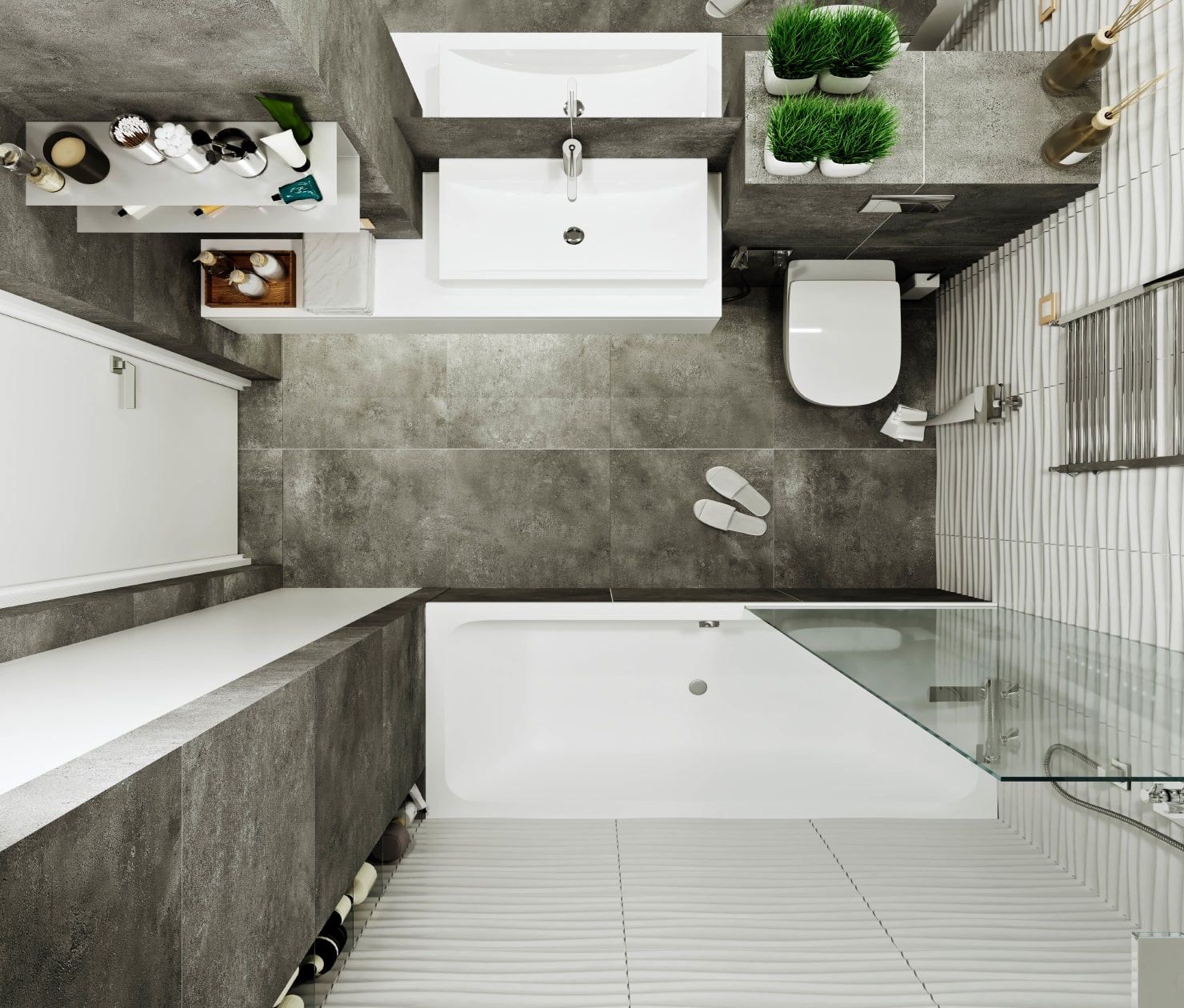Maximizing Space in a Small Bathroom

Transforming a compact bathroom into a functional and stylish haven requires strategic planning and a focus on maximizing every inch of available space. By thoughtfully considering each element, you can create a bathroom that feels spacious and comfortable, despite its limited square footage.
Designating Specific Areas for Each Function
A well-organized bathroom starts with clearly defining dedicated areas for each function. This approach ensures a smooth flow and prevents clutter.
- Toilet Area: Choose a compact toilet model that fits snugly against the wall, leaving room for a small storage shelf or a narrow cabinet beside it. Consider a wall-mounted toilet, which can further enhance the feeling of spaciousness by minimizing the footprint.
- Sink Area: Opt for a pedestal sink or a wall-mounted vanity to maximize floor space. A compact sink with a narrow basin can also save precious counter space.
- Shower Area: For a small bathroom, a walk-in shower is often the most efficient choice. Utilize corner space by installing a corner shower unit, which can create a sense of openness. If a tub is essential, consider a compact model that fits snugly in a corner.
Utilizing Vertical Space
Small bathrooms often benefit from maximizing vertical space. This approach provides ample storage while minimizing the visual impact on the floor area.
- Shelves: Install floating shelves above the toilet or sink to store towels, toiletries, and decorative items.
- Cabinets: Utilize wall-mounted cabinets or mirrored cabinets to store items discreetly while adding a touch of elegance.
- Wall-Mounted Storage: Explore wall-mounted organizers for storing towels, brushes, and other essentials. These organizers come in various sizes and styles to complement different bathroom aesthetics.
Exploring Multi-Functional Furniture
Multi-functional furniture is a valuable asset in small bathrooms, as it combines storage and seating in one piece.
- Vanity with Integrated Storage: Choose a vanity with drawers or shelves to store toiletries, towels, and other bathroom necessities. This approach eliminates the need for additional storage units, freeing up valuable floor space.
- Shower Seat with Built-in Shelves: A shower seat with integrated shelves provides a convenient place to sit while showering and also offers storage space for shampoos, conditioners, and other shower essentials.
Choosing the Right Fixtures and Furniture
80 square feet bathroom design – When selecting fixtures and furniture for a small bathroom, prioritize functionality and space-saving designs. Consider these factors:
- Compact Fixtures: Opt for compact toilets, sinks, and showerheads to minimize their footprint and maximize available space.
- Vertical Storage Solutions: Incorporate shelves, cabinets, and wall-mounted organizers to utilize vertical space efficiently.
- Multi-Functional Furniture: Explore vanities with integrated storage, shower seats with built-in shelves, and other multi-functional pieces to optimize space and functionality.
- Light Colors: Light-colored walls and fixtures create a sense of spaciousness and reflect light, making the bathroom feel larger.
- Mirrors: Mirrors strategically placed on walls can visually expand the space and enhance the feeling of openness.
Creating a Sense of Openness: 80 Square Feet Bathroom Design

A small bathroom can feel cramped and overwhelming. However, with clever design choices, you can create an illusion of spaciousness, making the room feel airy and inviting. The key is to employ techniques that visually expand the space, making it appear larger than it actually is.
Utilizing Light Colors and Reflective Surfaces
Light colors reflect more light, making the room appear brighter and more spacious. Consider using white, cream, or light gray for the walls, ceiling, and even the flooring. These colors will help to bounce light around the room, creating a sense of openness. Reflective surfaces, such as mirrors and glossy tiles, also contribute to this effect. Mirrors, in particular, have the remarkable ability to visually double the space, making the room feel much larger.
Strategic Placement of Mirrors, 80 square feet bathroom design
Mirrors are powerful tools in small bathroom design. By strategically placing mirrors, you can create the illusion of depth and expand the perceived size of the space. A large mirror placed opposite a window will reflect natural light, making the room feel brighter and more spacious. Consider installing a full-length mirror on a wall to make the room appear longer, or placing a smaller mirror above the sink to reflect light and create the illusion of more space.
Seamless Shower Enclosure
Traditional shower enclosures with visible frames can create a sense of visual clutter, making the bathroom feel smaller. Opting for a frameless shower enclosure will help to create a seamless transition between the shower area and the rest of the bathroom, making the space appear larger and more open. The absence of a visible frame allows for a more integrated look, blurring the lines between the shower and the surrounding area.
Incorporating Natural Light and Maximizing Artificial Light Sources
Natural light is essential for creating a sense of openness in any space, especially in a small bathroom. If possible, position the bathroom near a window to allow natural light to flood in. If natural light is limited, consider using strategically placed artificial light sources to create a bright and airy atmosphere. Use a combination of overhead lighting and task lighting, such as sconces or vanity lights, to illuminate the space effectively. Choose light bulbs with a high CRI (Color Rendering Index) to ensure that the light is bright and natural-looking.
Design Considerations for a Small Bathroom

In a small bathroom, every inch counts. A well-planned layout is crucial for maximizing space and creating a functional and comfortable environment. The right layout ensures efficient use of space, while also providing a sense of openness and ease of movement.
Bathroom Layout Options
Choosing the right bathroom layout is essential for a small space. There are several common layouts, each with its own advantages and disadvantages. Let’s explore some of the most popular options.
- Single-Wall Layout: This layout is perfect for small bathrooms with limited space. The fixtures, such as the toilet, sink, and shower, are placed along a single wall. This configuration maximizes floor space, making the bathroom feel larger. However, it can be less efficient if the bathroom is narrow, as it may create a cramped feel.
- Double-Wall Layout: This layout involves placing fixtures on two opposite walls, creating a more spacious feel. It’s ideal for bathrooms with a wider footprint. However, it can be challenging to implement in smaller bathrooms, as it requires careful planning to avoid making the space feel cramped.
- Corner Layout: This layout maximizes space by utilizing a corner of the bathroom. It’s a great option for smaller spaces, as it leaves more room for movement. However, it may require customized fixtures and careful planning to ensure proper functionality.
Comparison of Bathroom Layout Options
Here’s a detailed comparison of the different bathroom layout options, highlighting their pros and cons:
| Layout | Pros | Cons |
|---|---|---|
| Single-Wall | Maximizes floor space, provides a sense of openness, suitable for narrow bathrooms | Can feel cramped in narrow bathrooms, limited storage options |
| Double-Wall | Creates a spacious feel, allows for more storage options, ideal for wider bathrooms | Can be challenging to implement in smaller bathrooms, may require careful planning |
| Corner | Maximizes space by utilizing a corner, leaves more room for movement, great for small bathrooms | May require customized fixtures, careful planning is essential for functionality |
